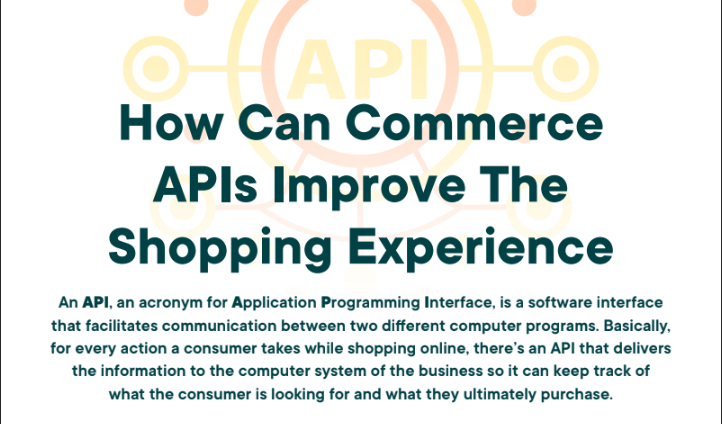Application Programming Interfaces (APIs) are rapidly transforming the online retail landscape by enabling seamless communication between data platforms and unlocking new levels of integration across eCommerce shopping channels. Harnessing the power of commerce APIs allows businesses to stitch together polished, personalized customer journeys from product discovery to purchasing to post-sales support.
By leveraging API tools, merchants can revolutionize shopping experiences across devices and channels, facilitating effortless browsing, comparison and purchasing. This article explores what commerce APIs are and the countless ways they can help optimize the modern shopping journey.
Learn the: Ecommerce Management Solutions to Grow Your Business
What Is a Commerce API?
A commerce API acts as a communication interface between the frontend and backend of an eCommerce system, allowing the various software components to seamlessly interact. It essentially serves as a translator — enabling different platforms to exchange data and instructions in a common language.
For example, a product catalog API translates product information from a backend database into a standardized format that the frontend website can understand and display. Without this API, the database and website can’t directly communicate. The API serves as the interpreter between these systems.
Below are some additional commerce-focused APIs that might handle critical retail functions for your online store:
- Product APIs retrieve real-time data like descriptions, images, availability, pricing and more to populate online storefronts.
- Inventory APIs connect in-store, warehouse and supplier systems to provide accurate stock status and availability across channels.
- Order management APIs control purchases, refunds, shipments, returns and more behind the scenes after checkout.
- Customer account APIs manage login profiles, order history, payment info, loyalty programs and other key details.
- Pricing APIs factor in promotions, currencies, taxes, countries and additional variables to calculate and display prices dynamically.
- Shipping APIs automate package labeling, tracking, carrier rates and delivery status updates throughout the fulfillment process.
- Payment APIs integrate secure credit card and alternative payment processing from various gateways.
By making these backend retail operations accessible via standard APIs, eCommerce platforms gain tremendous flexibility to integrate with new partners, channels and technologies.
How Commerce APIs Improve Shopping?
Commerce APIs are the connective tissue that weaves together unified, personalized shopping journeys across different channels. They remove friction by seamlessly bridging systems and data that might otherwise exist in separate silos.
- Before each purchase, commerce APIs help customers easily find relevant product information and availability. Search, browse and inventory APIs, for example, allow seamless discovery and navigation.
- During each purchase, commerce APIs can help boost conversions with quick checkout processes. Cart and order APIs enable one-click frictionless transactions. Payment APIs facilitate secure processing.
- After each purchase, customer account APIs can help nurture relationships by remembering preferences and histories. This allows personalized recommendations and tailored loyalty programs. Return merchandise APIs also enable easy exchanges when needed.
With data, workflows and platforms streamlined across the entire shopping journey by APIs, silos become obsolete as information travels securely among the different systems. As a result, merchants benefit from improved operational efficiency — while customers enjoy a more unified and personalized shopping experience.
Check the: Top 5 Essential Things You Need for eCommerce Store
Conclusion
Commerce APIs bind together optimized customer experiences across touchpoints and channels. They offer businesses a frictionless path to unified commerce. By leveraging APIs, merchants can dissolve data and system silos to deliver seamless, personalized journeys before, during and after every purchase. The result is happier customers and, ultimately, increased sales.
In today’s digital landscape, commerce APIs are no longer nice-to-haves but competitive necessities. Companies that harness these tools will be poised to provide engaging experiences that delight customers and drive revenue.
For a more thorough breakdown of commerce API functions, features and benefits, please see the accompanying resource.
Infographic created by commercetools

